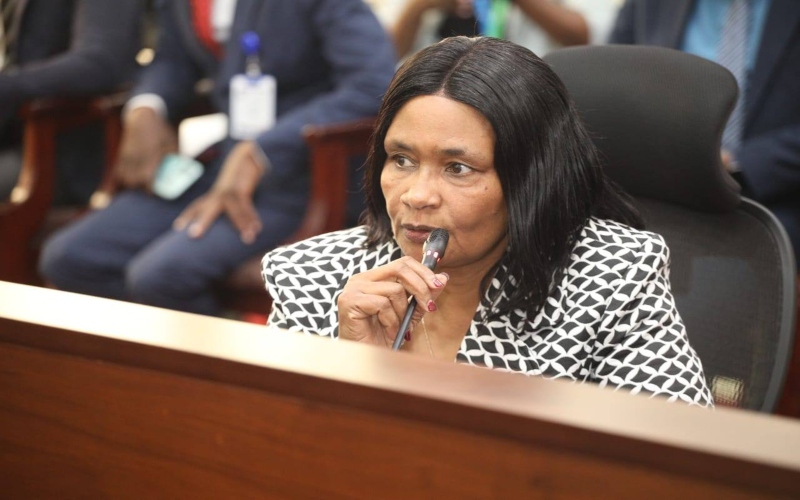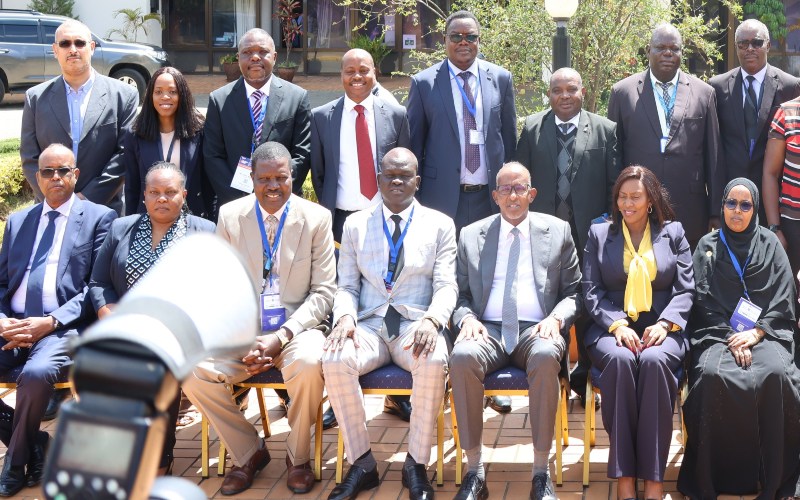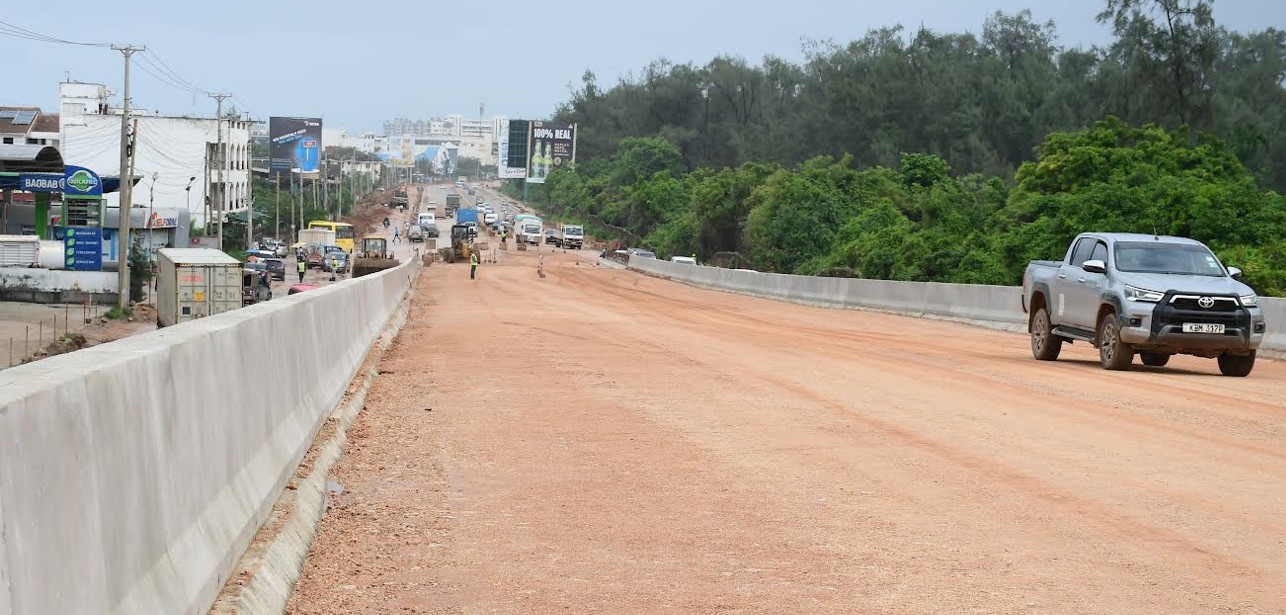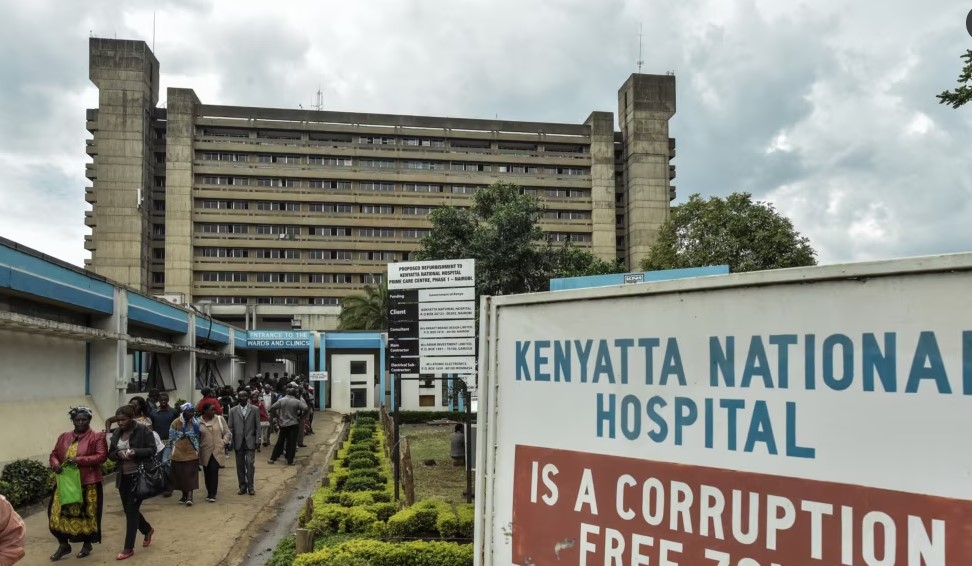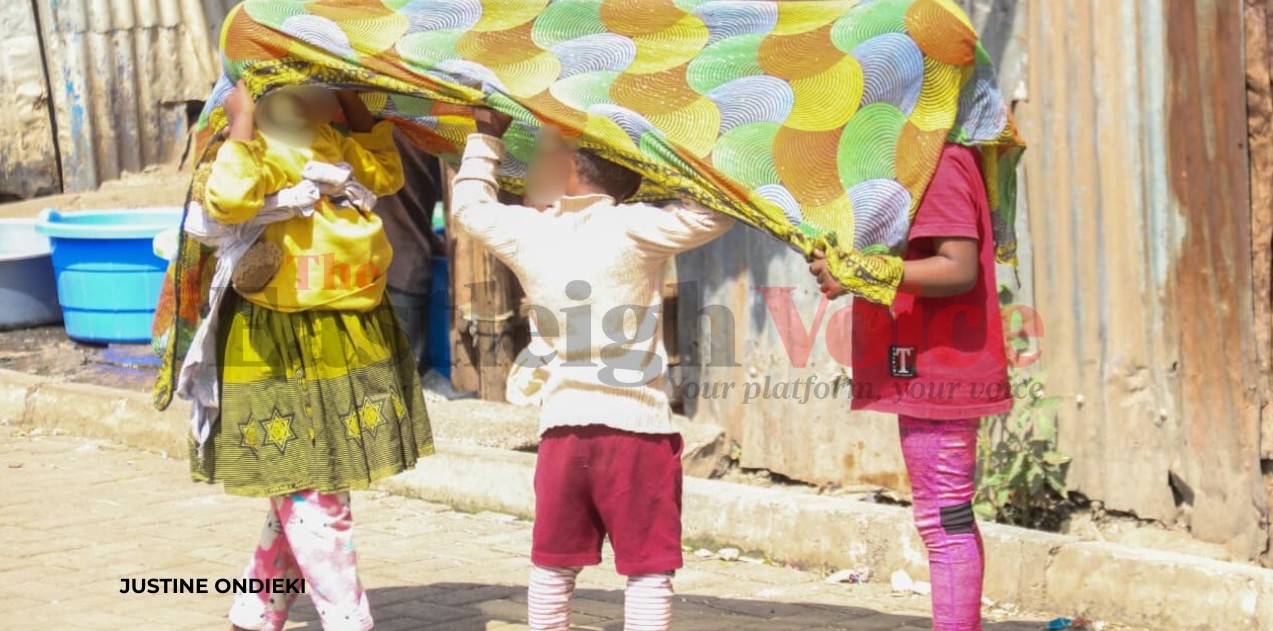Nairobi’s matatu madness persists as City Hall’s attempts to offer solution fall flat
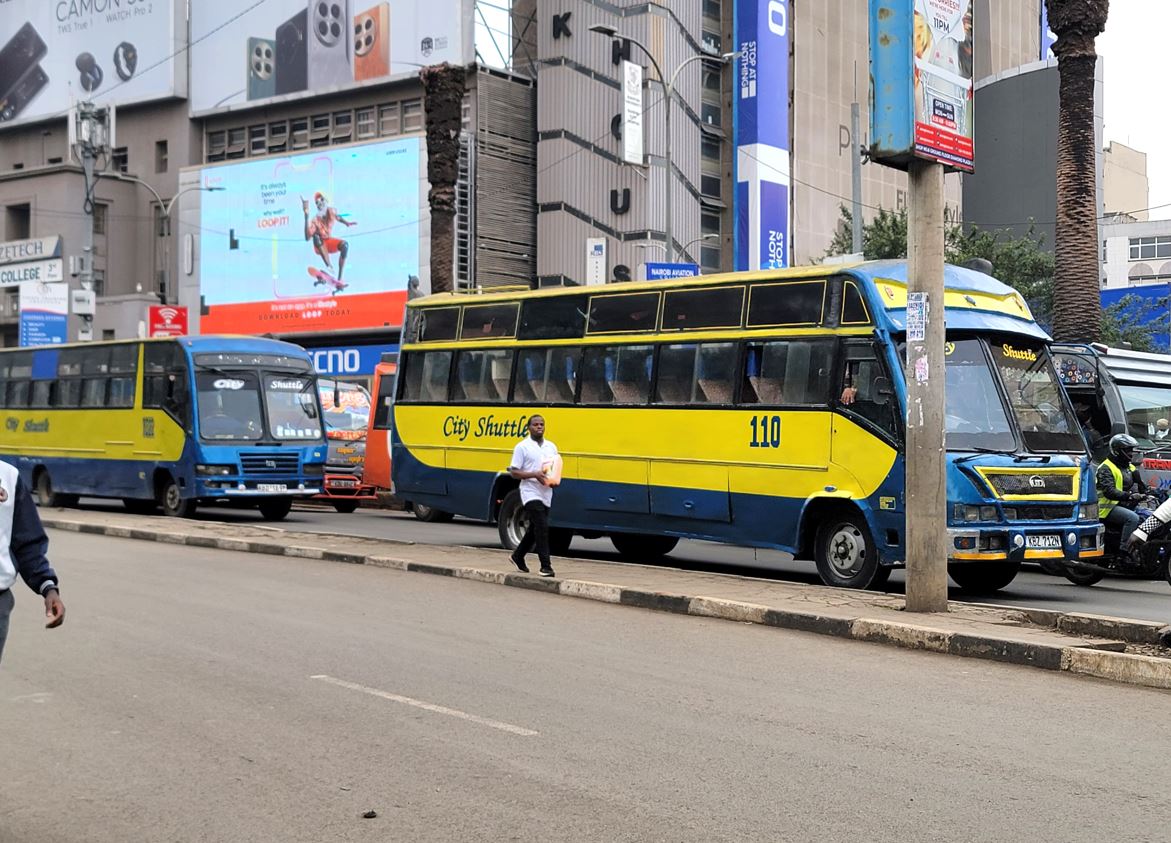
Pedestrians have to dodge between the parked matatus, risking their lives, as there’s hardly any safe place to walk.
Getting around Nairobi’s central business district (CBD), especially the downtown areas has become a real struggle because of the many matatus clogging the streets.
The many 14-seater and 33-seater matatus are always stationed wherever they find space, making the roads so narrow that traffic gets jammed for hours.
More To Read
- High Court grants more time for talks in Nairobi matatu-petrol station ban case
- Relief for matatu operators after High Court halts eviction from CBD loading zones
- Matatus take EPRA and City Hall to court over ban on passenger pickups at fuel stations
- 12 matatu Saccos sue Nairobi County over eviction from three petrol stations
- Saccos term petition to ban Matatus at fuel stations baseless, court told
- Matatu operators petition Parliament for laws to curb insurance fraud
Tom Mboya Street, all the way from Afya Centre to the Koja Roundabout has been converted into matatu pick-up and drop-off points.
Matatus that ply Westlands, Kasarani, and Thika are common along this street, and due to the high demand especially during rush hours in the evening, commuters line up in long queues to board the vehicles, making the situation messier.
Ronald Ngala and Mfangano streets are always parked with matatus plying Kitengela, Umoja, Donholm and Githurai routes.
With the ensuing chaos, pedestrians have to dodge between these parked matatus, risking their lives, as there’s hardly any safe place to walk.
Sidewalks which are meant for pedestrians are often blocked by these vehicles, making it hard and risky for people to cross the streets.
The situation in the capital city is always chaotic and dangerous, and even though there are clear traffic rules, nobody seems to follow them.
“Nowadays we are used to the madness in town since whether it’s on a holiday or a weekend, the congestion and disorder is still the same,” said Winnie Njeri, a commuter.
Zipporah Wanjie, another commuter, said there is no hope of matatus being removed from the CBD or bringing order in public transport in the city.
“What I usually worry about is my safety as a pedestrian walking in the CBD, especially on Tom Mboya Street,” said Wanjie.
Just like his predecessors, Nairobi Governor Johnson Sakaja had in December 2022 vowed to kick out matatus from the CBD.
The response and resistance to his planned move was swift, with Deputy President Rigathi Gachagua declaring he was against it.
He termed the move as ill-intentioned, claiming it was aimed at harassing businesspeople from the Mt Kenya region where he hails from.
 Passengers scrambling for a matatu along Yusuf Haji Street in Nairobi's Eastleigh. (Photo: Abdirahman Khalif)
Passengers scrambling for a matatu along Yusuf Haji Street in Nairobi's Eastleigh. (Photo: Abdirahman Khalif)
“I have told the Nairobi governor that we will have a sitting with him because we are the ones who elected him. I mobilised Kikuyus in Nairobi to vote for him. We must first sit and discuss any decision that he makes which may affect business in Nairobi,” Gachagua said on December 20, 2022.
Former Matatu Owners Association chairman Simon Kimutai criticised plans by the governor to relocate the dropping points for long-distance matatus from the CBD to the new Green Park terminus.
Kimutai said no consultation was done before the move, which he said would only complicate matatu operations.
He further claimed that Sakaja was using the old ways of doing things, randomly waking up one morning and making certain decisions without thinking about the negative impacts on stakeholders.
“Call those who you purported you want to move from one area to the other and talk with them. Let them give you the best method. But if you use askaris to move vehicles to a certain area, you can’t succeed,” Kimutai said.
But how did we get here?
Rogue matatu drivers
On June 17, 2021, a woman was crushed to death between two matatus in the CBD. A driver who was reversing his matatu pinned her against another matatu.
On July 28, 2018 about 10 people died after a matatu rammed into pedestrians at the Old Nation roundabout.
Reports indicated that the driver of the Latema Sacco bus plying the Kangemi route was speeding from town before he lost control of his vehicle, running over several people who were waiting to board a matatu at the stage.
On March 21, 2016, a middle-aged woman was pinned and crushed between two matatus plying the Githurai route while trying to cross Ronald Ngala Street. The driver of one of the vehicles was reversing and hit her.
Past efforts to decongest the city and bring order to the CBD were unsuccessful.
The first attempt was made by former town clerk Philip Kisia in August 2009 during the times of the defunct Nairobi City Council.
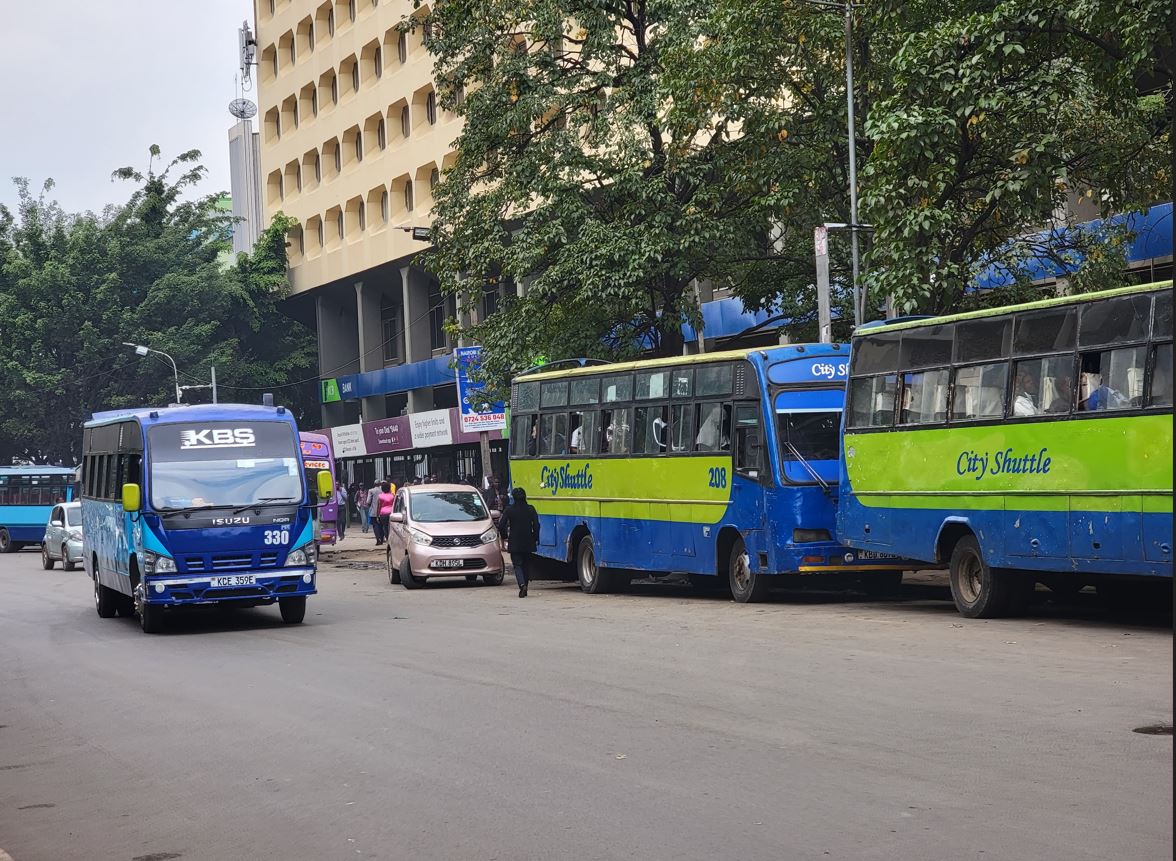 Public service vehicles along Tom Mboya Street in the Nairobi CBD. (Photo: Ahmed Shafat)
Public service vehicles along Tom Mboya Street in the Nairobi CBD. (Photo: Ahmed Shafat)
However, his efforts were short-lived as he succumbed to pressure from public service operators two months later. Kisia's plan aimed to keep matatus from Thika and parts of central Kenya, Rift Valley, Kisii, and Kilgoris out of the CBD.
In 2013, former governor Evans Kidero also tried to decongest the city, announcing that the order to ban matatus from Nairobi's CBD would be enforced by September of that year.
But his plan also failed. His administration proposed several measures, some of which were criticised by residents after a short trial.
In 2014, he signed a memorandum of understanding with Foton and the Beijing Municipal Commission of Transport for the supply of high-capacity buses for Sh6.4 billion.
City Hall said the MoU was for the supply of the first 266 buses for the launch of a metro transportation system. But this was marred by corruption allegations, leading to the sacking of then Transport executive Evans Ondieki.
Attempts to remove roundabouts from some roads in the city also failed, forcing the county to shelve the project.
When Mike Sonko took over as the second governor in 2017, he promised to remove matatus from the CBD in the first 100 days in office. This did not happen after he changed his mind to allow for wider consultations.
The plan was to allow only two matatus from each sacco to stop at any given termini at a time. Matatus were also supposed to operate from holding points outside the city and only be allowed into the CBD once the others had departed.
On December 3, 2018, Nairobi commuters walked for long distances after Sonko banned matatus from getting into the CBD.
Governor Sakaja, who was then Nairobi’s Senator, and 21 matatu saccos, took City Hall and Sonko to court over the decision to ban public service vehicles from the CBD. Sakaja accused Sonko of failing to consult the public and stakeholders before effecting the ban. The ban didn’t last long.
As a result, the national government also embarked on a plan to reintroduce vibrant commuter train services within the CBD
Bus Rapid Transit (BRT) was introduced as part of the plan. This is yet to bear fruit. The BRT system was part of the Jubilee government’s Big Four agenda and it aimed to improve transport.
Kenyans have eagerly waited to see its implementation since 2018, but the project seems to have stalled.
In February 2020, some functions of the Nairobi City County government were transferred to the national government and placed under the Nairobi Metropolitan Service (NMS) which was established by former president Uhuru Kenyatta.
One of its major goals was to decongest the CBD. The NMS targeted to set up six termini at Sh350 million. They were to be the official pick-up and drop-off points once matatus were barred from the CBD.
In NMS' plan, matatus from Thika Road were to terminate at Desai and Park Road termini, those from Jogoo Road at Muthurwa, while those plying Waiyaki Way were to stop at Ngara. Those using Ngong and Lang’ata roads were to terminate at Green Park.
In 2021, NMS conducted at least three test runs to identify challenges and loopholes before opening the Green Park terminus to the public.
After the test runs, it was announced that the bus terminal would open for business after NMS called for lease applications.
However, NMS’s tenure came to an end before it could fulfil the decongestion plan.
In 2020, for instance, the National Transport and Safety Regulations document revealed that 272 matatu saccos were registered to operate in the city, with 420 others being unregistered.
A previous record by the County Assembly Transport Committee indicated that 692 Saccos were listed. NMS froze any new allocation of picking and dropping bays for matatus in Nairobi after concerns were raised over illegal allocations by unauthorised officers.
According to NTSA regulations, for a matatu sacco to be registered, it requires a minimum of 30 PSVs.
Top Stories Today


